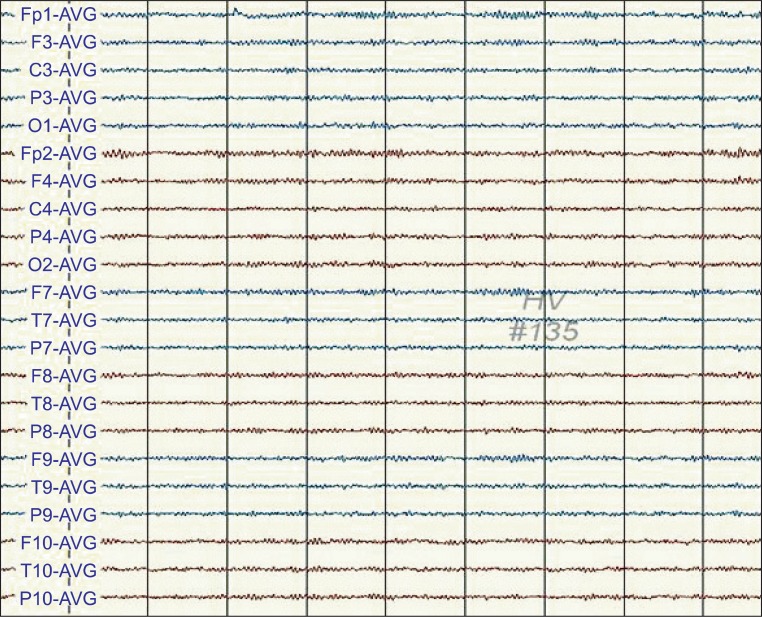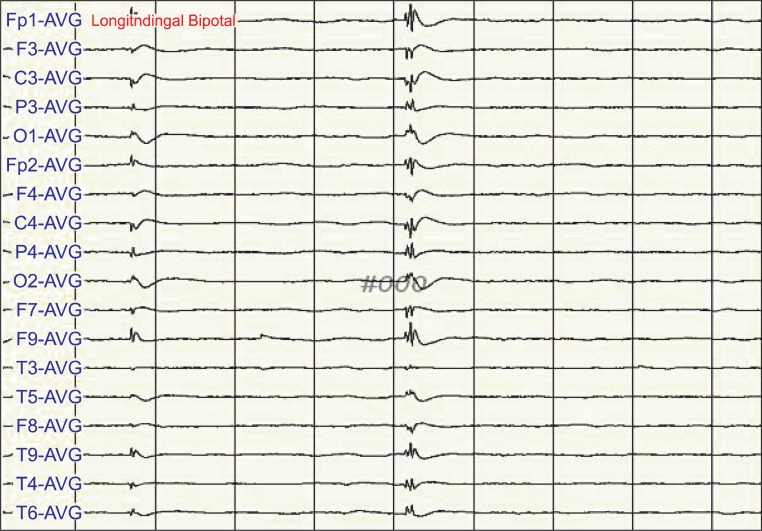Ann Rehabil Med.
2012 Aug;36(4):561-564. 10.5535/arm.2012.36.4.561.
Lance-Adams Syndrome
- Affiliations
-
- 1Department of Rehabilitation Medicine and Institute of Health Sciences, Gyeongsang National University Graduate School of Medicine, Jinju 660-702, Korea. yoonch@gnu.ac.kr
- KMID: 2266729
- DOI: http://doi.org/10.5535/arm.2012.36.4.561
Abstract
- It is not common for a patient who survives cardiac arrest to experience significant neurologic impairment such as acute and chronic post-hypoxic myoclonus, known as Lance-Adams syndrome. This syndrome is predominantly characterized by myoclonus that starts days to weeks after cardiopulmonary resuscitation in patients who regained consciousness. Although several cases of LAS were reported, the decisive treatment method has not been established. We report a 43 year old man with Lance-Adams syndrome who showed long-term improvement through treatment with anti-myoclonic agents and participation in a rehabilitation program.
Figure
Reference
-
1. Venkatesan A, Frucht S. Movement disorders after resuscitation from cardiac arrest. Neurol Clin. 2006; 24:123–132. PMID: 16443134.
Article2. Choi HC, Song HK. Is the intensive anticonvulsant treatment for control of acute posthypoxic myoclonic status epilepticus necessary? J Korean Neurol Assoc. 2006; 24:125–130.3. Werhahn KJ, Brown P, Thompson PD, Marsden CD. The clinical features and prognosis of chronic posthypoxic myoclonus. Mov Disord. 1997; 12:216–220. PMID: 9087980.
Article4. Lance JW, Adams RD. The syndrome of intention or action myoclonus as a sequel to hypoxic encephalopathy. Brain. 1963; 86:111–136. PMID: 13928398.
Article5. Kim DH, Kim SJ, Oh KI, Kwon YS, Son BK. A Case of the successful treatment of pentobarbital for posthypoxic action myoclonus (Lance-Adams Syndrome) with refractory status epilepticus. J Korean Child Neurol Soc. 2006; 14:342–347.6. Frucht SJ, Louis ED, Chuang C, Fahn S. A pilot tolerability and efficacy study of levetiracetam in patients with chronic myoclonus. Neurology. 2001; 57:1112–1114. PMID: 11571347.
Article7. Welsh JP, Placantonakis DG, Warsetsky SI, Marquez RG, Bernstein L, Aicher SA. The serotonin hypothesis of myoclonus from the perspective of neuronal rhythmicity. Adv Neurol. 2002; 89:307–329. PMID: 11968457.8. Matsumoto RR, Truong DD, Nguyen KD, Dang AT, Hoang TT, Vo PQ, Sandroni P. Involvement of GABA(A) receptors in myoclonus. Mov Disord. 2000; 15:47–52. PMID: 10755272.
Article
- Full Text Links
- Actions
-
Cited
- CITED
-
- Close
- Share
- Similar articles
-
- Lance-Adams Syndrome
- A Case of The Successful Treatment of Pentobarbital for Posthypoxic Action Myoclonus(Lance-Adams Syndrome) with Refractory Status Epilepticus
- An Exploration of the Neural Network of Lance-Adams Syndrome: a Case Report
- Acute onset Lance-Adams syndrome following brief exposure to severe hypoxia without cardiac arrest: a case report
- A Case of Corrosive Gastritis Caused by Salt-fermented Northern Sand Lance





